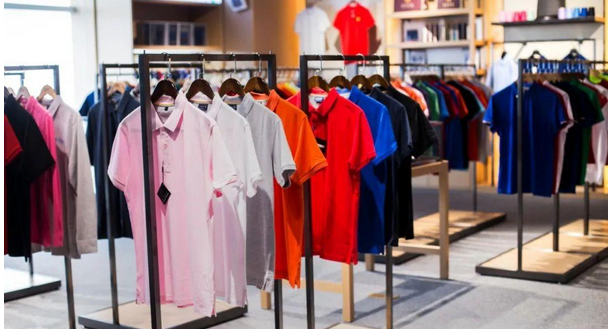Introduction: Fabric is the raw material for making clothing. We all know that the three elements of clothing are style, color and fabric. Fabric can not only interpret the style and characteristics of clothing, but also directly affect the color and shape of clothing. Being familiar with the characteristics of each fabric will also help customers close deals and provide follow-up services. If customers have questions during wearing or washing, we can also answer them in time. Today I will share with you some tips on summer T-shirt fabric selection. suggestion.

Fabric yarn count and gram weight
01 Yarn count
Custom weight refers to the length of a certain weight of fiber or yarn. The larger the value, the thinner the yarn. Its measurement units include metric counts (Nm) and imperial counts (Ne). The thickness of woolen and wool-type chemical fiber pure spinning and blended yarns in my country is still expressed in metric counts. Yarn count: Fixed weight refers to the length of fiber or yarn of a certain weight. The larger the value, the thinner the yarn. Its measurement units include metric counts (Nm) and imperial counts (Ne). The thickness of woolen and wool-type chemical fiber pure spinning and blended yarns in my country is still expressed in metric counts.
02 Gram Weight
Commonly used unit for evaluation of textile silk products: It is the weight of fabric per square meter, the unit is “gram/square meter” (g/m2), abbreviated as FAW. The gram weight of the fabric is generally the number of grams of fabric weight per square meter. The gram weight is an important technical indicator of knitted fabrics. Woolen woolen fabrics usually also use the gram weight as an important technical indicator.
The grammage generally indicates the thickness of the fabric. The greater the grammage, the thicker the garment. The weight of T-shirts is generally between 160 grams and 220 grams. If it is too thin, it will be very see-through, and if it is too thick, it will be stuffy (short-sleeved generally choose 180-220 grams as the main thickness, which is the right thickness)
Differences in fabrics and characteristics
Pure cotton fabric
Pure cotton fabric features good hand feel, comfortable wearing and environmental protection. The weight is generally between 160 grams and 300 grams, and the general choice is between 180 and 260 grams. The count is generally 21 or 32 (count The number refers to the average length of cotton fibers, the higher the number, the softer it is).
Quick-drying fabrics
Quick-drying fabrics are generally: chemical fiber, polyester fiber, synthetic fabric fiber. The main feature of quick-drying clothes is that they can quickly wick away sweat and keep the skin dry. Such as xw002, XT100.
O’Dell fabric
O’Dell fabric has the soft feel of cotton and also plays a role in slimming and beautifying the body. It has the hygroscopicity and moisture conductivity of cotton, and the soft, smooth, breathable, refreshing, drape and elegant properties of silk. . It meets people’s pursuit of health, comfort, and beauty. There is no need to worry about the shrinkage of the fabric under regular washing. Its wrinkle resistance is also very good, which is a major feature of this new type of fabric.
Modal fabric
Features of Modal fabric Modal fiber is a kind of cellulose fiber. It is a cellulose fiber like rayon and is a pure man-made fiber. Made from wood slurry produced in European shrubs and then processed through a specialized spinning process, Modal products have good softness and excellent hygroscopicity but poor fabric stiffness.
Polyester-cotton fabric
Polyester-cotton fabric feels soft and thick, and is not easily deformed after washing, but the wearing comfort is slightly worse than pure cotton. Common cotton-polyester fabrics are 65% cotton and 35% polyester, such as xp001, xp002, and xp005.
Stretch cotton fabric
Stretch cotton fabric is a type of spandex. Its advantages are: 1. It has high stretchability, good shape retention, and no wrinkles; 2. It feels soft and smooth, with the best elasticity. Comfortable to wear, considerate and fit; 3. Resistant to acid and alkali, abrasion and aging; 4. Good dyeability and not suitable for fading.
Customized T-shirt fabric suggestions
One-stop customization service platform for enterprises
Dear partners, I believe that through the above sharing, everyone will have a new understanding of the characteristics and differences of T-shirt fabrics. Many partners think that pure cotton fabrics will be better. The advantages of pure cotton T-shirts are high wearing comfort, good hand feel, and they are pure natural fibers. Relatively speaking, they also have a certain effect on environmental protection, but pure cotton T-shirts are not as crisp It is poor and easy to wrinkle, especially after being put into the water, it is very easy to deform. Therefore, when customizing T-shirts, you may wish to understand the characteristics of different fabrics first, and choose according to the occasion or purpose of your use. For example, for outdoor activities in summer camps, you can choose quick-drying or modal fabrics; if you wear work clothes in an office building, you can choose Polyester cotton or blended cotton; if it is worn by children, choose pure cotton fabric for better comfort. Thank you for your appreciation, I hope it is helpful to everyone.





